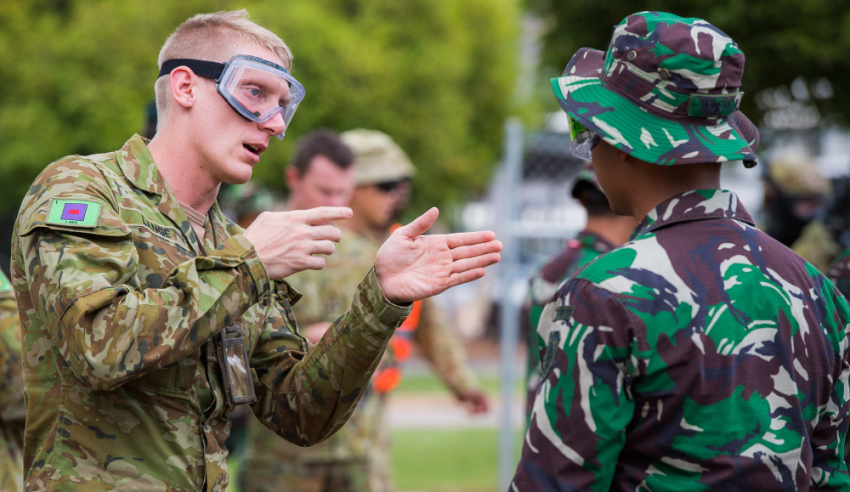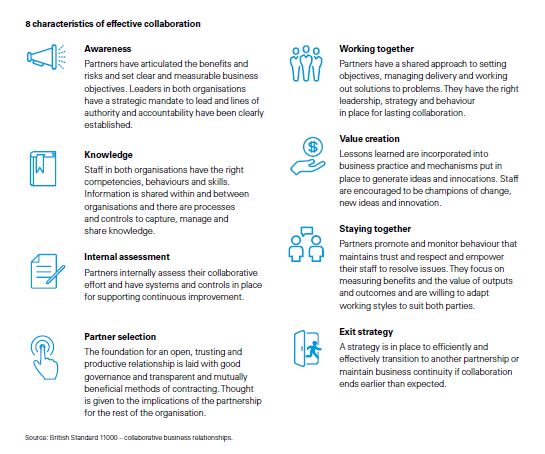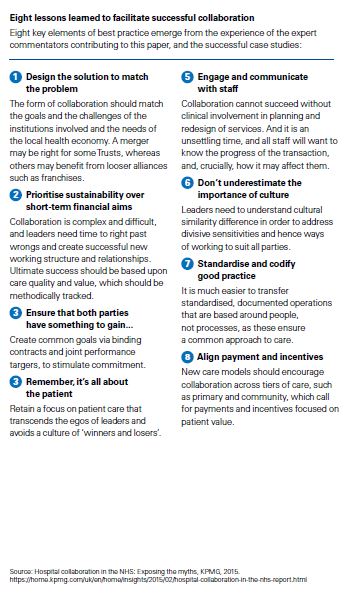The importance of collaboration cannot be understated during this time of change. In fact, KMPG believe that it is the foundation for success. As the scale and complexity of problems increase, collaboration between organisations is increasingly recognised as an effective response. By working in deeper partnership with others, organisations can solve problems that alone would be too difficult while also driving innovation, efficiency, growth and shared value.
To continue reading the rest of this article, please log in.
Create free account to get unlimited news articles and more!
How to kick-start collaboration
There’s a clear understanding in the defence sector of the benefits of collaboration and a willingness to do it better. The question is how.
Frameworks, standards and models are an important part of any answer. They guide the design of organisational structures and processes, inform goals and governance and set benchmarks for evaluation and continuous improvement.
Important as these are, our experience tells us that it is the culture of the organisation that makes or breaks collaboration. By this we mean the style of leadership, the language used, the unspoken attitudes and norms of practice, the organisation’s openness to change or to the new, and the incentives and deterrents that shape the behaviour and interactions of staff.
Effective collaboration emerges from an intelligent balance of both ‘hard’ and ‘soft’ skills and should be seen as an evolving, dynamic relationship.
Checklist for successful collaboration
- Is there a shared vision and purpose?
- What about the end user: how is customer-centricity embedded in the partnership?
- What form of collaboration will best achieve the desired goals?
- How well do you know each other: what research and planning needs to be done before entering the partnership?
- Is the organisational culture ready to make the collaboration successful?
- What are the ground rules: what governance, knowledge, intellectual property sharing and learning frameworks need to be set up?
- What’s the exit strategy to end the collaboration when needed?
The many forms of collaboration
Collaboration can take many forms, from joint ventures to peer networks and informal interaction.
Whether they use formal frameworks or best practice guidelines, organisations that deliberately deploy standards and procedures for inter-organisational collaboration tend to collaborate better.
- Joint ventures
- Public private partnerships
- Joint research
- Joint development, prototyping and evaluation of solutions
- Special purpose teams
- Peer review
- Shared data and information for the purpose of design, operations and service delivery
- Joint production, construction and maintenance
- Mentoring and organisational development
- Integrated supply networks and value chains geared to building capability
- Peer networks and formal interaction
- Common governance
- Sharing assets and resources
A strong and resilient framework
For a large organisation looking to put its whole enterprise on a collaborative footing, a formal framework of standards may be the way to go.
An accredited framework such as ISO 11000 Collaborative Business Relationships is one of those options and there are others. This formal framework sets standards on partner selection, knowledge management and value creation along with several other dimensions of collaboration, and can be integrated into operations, processes and collaboration between organisations.
In the UK, the Ministry of Defence, Lockheed Martin, Raytheon and others adopted this standard’s predecessor, the BSI 11000, in 2010 to help guide their many collaborative partnerships.
In the US, the Department of Defence has also recently acknowledged the value of the framework as a guide to sustaining public-private partnerships.
8 characteristics of effective collaboration
Eight lessons learned to facilitate successful collaboration
Nourishing a culture of collaboration
Culture is often seen as a ‘soft’ attribute with, at best, a loose connection to the performance of an organisation or partnership, while ‘hard’ factors like contracts and regulations are given disproportionate attention. In a recent survey, nearly half of respondents to the survey – 48 per cent – cited culture as the single biggest barrier to collaboration, making the issue simply too big an issue to ignore.
Organisational culture emerges from a range of factors including language, unspoken attitudes and norms, openness to change and the incentives that shape behaviour and interactions of staff. It is these organisational qualities and competencies that make or break collaboration. After all, people motivated to achieve the best will address gaps or failures of practice or strategy and seek out opportunities to improve. Those that aren’t, won’t and they will also not use the tools of collaboration effectively.
A major barrier
Excessive regard for legacy practices, red tape or simply ‘the way things are done’ obstruct work and create bad will. Teams with domineering voices and a lack of diversity in skills and backgrounds run the risk of group-think. If an organisation allows cultures like this to grow then it will put its own effectiveness, sustainability and growth at risk.
Collaborating with others requires and ability to understand their cultures and a willingness to adapt working styles accordingly. Effective collaboration also requires a realistic evaluation of the expertise and capacities of your own team members as well as those of your partner. Attitudes that ‘point the finger’ at others will hinder collaboration.
Cultivating leadership
With leadership ranked as the second largest obstacle to effective collaboration, a new model of leadership is needed – one that rewards those who are open, adaptive, communicative, respectful of difference and always ready to learn. Leadership practised in this way is mindful of the interdependence of people in a partnership and wider networks and removes barriers to the flow of information. It encourages shared decision-making and a controlled experimentation with ideas and options with the aim of achieving the best outcome for all parties.
By rewarding a practice of leadership in this way rather than the position, we can start to see its potential in a collaborative partnership. We can see that these qualities and attitudes are essentially collaborative in nature, which suggests that people in all positions must be empowered to perform within the context in which they work. A widely exercised practice of leadership can open up the full bandwidth of skills, knowledge and talent in a partnership, leading to innovation and a wiser use of resources in an intelligent search or optimal solutions.
How essential is collaboration to Defence’s new Capability Life Cycle?
In the 2016 Defence White Paper, Defence bought together the key elements of investment needed to deliver and sustain Australia’s defence capabilities. The Integrated Investment Program is intended to facilitate the whole-of capability and whole-of-life approach to investment. High levels of collaboration between industry and Defence’s capability managers will be required to prioritise proposals and retain agility in investment decisions.
Defence’s new Capability Life Cycle (CLC) requires industry involvement earlier in the process, with engagement expected to commence routinely before Gate 0 for most projects. This new approach requires capability developers to be flexible and fast, and requires a change in behaviour from all involved.
Not since the Tange Review in 1973 has there been a plan for such a fundamental change to Defence. There is strong alignment about the need to improve and do things differently. Defence acknowledges that such a significant reform agenda makes it likely that some mistakes will be made as new approaches are bedded down, but with new behaviours people should quickly learn – making the new CLC a success.
Conclusion
We need to stress that frameworks, standards and models are important but our experience shows that it is the culture of the organisation that makes or breaks collaboration. People at all levels need both ‘hard’ and ‘soft’ skills as relationships evolve over time during the capability and acquisition life cycle and in response to new information.
Leadership will be essential. All staff will need to look for ways to model openness and trust and demonstrate a willingness to embrace difference and diversity. Timely and honest communication, a learning mindset, and agile and adaptive behaviours will be essential.
The challenges are great, both organisationally, culturally and in the wider policy and strategic context. Only collaboration can give Defence and its partners the resilience and agility to anticipate and respond effectively in this environment.

 Login
Login










